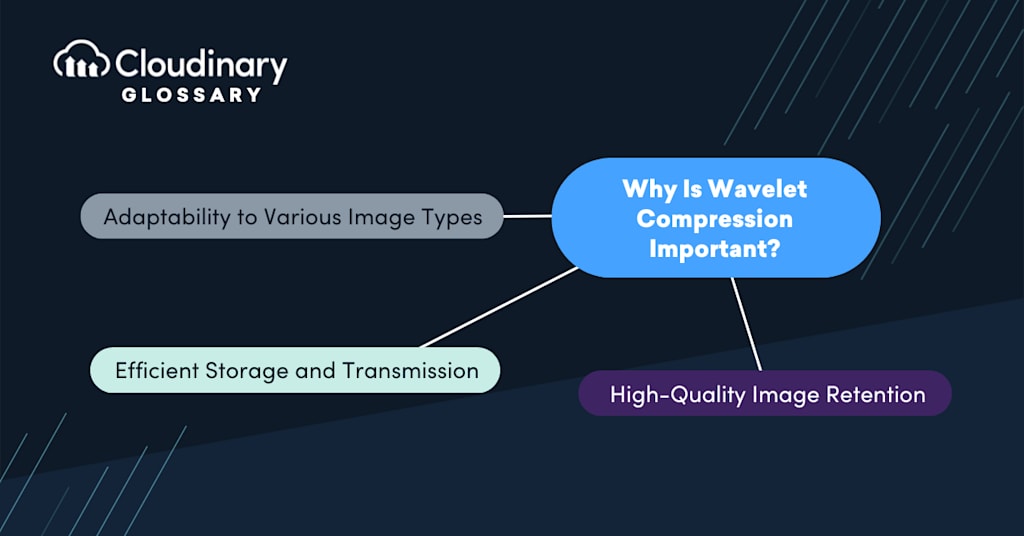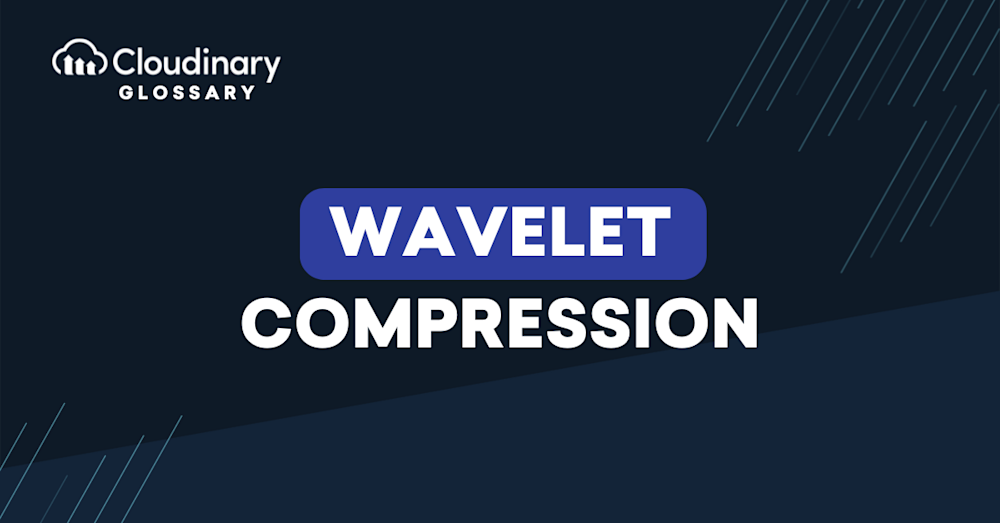What Is Wavelet Compression?
Wavelet compression is an image compression technique that utilizes wavelet transforms to reduce file sizes while maintaining image quality. Unlike other compression techniques focusing solely on frequency or spatial domain transformations, wavelet compression breaks an image down into a set of wavelet coefficients, representing high-frequency and low-frequency details. By discarding less important coefficients while preserving essential image features, wavelet compression achieves impressive compression ratios.
Wavelet Image Compression vs. Other Types of Image Compression
To understand the true potential of wavelet compression, let’s compare it to other popular image compression methods.
Lossy Compression
Wavelet compression is a lossy technique in which some image data is irretrievably lost. However, compared to other lossy techniques like JPEG compression, wavelet compression often offers higher compression ratios without compromising image quality as much. It preserves finer details, textures, and edges more effectively, resulting in higher fidelity in the compressed image.
Spatial Domain Compression
Spatial domain compression techniques, such as run-length encoding (RLE), exploit redundancies within an image’s spatial domain. While spatial compression is useful for certain types of images, it may struggle to preserve fine details and high-frequency components. Wavelet compression excels at capturing these details and textures, resulting in higher-quality compressed images.
Transform Coding
Wavelet compression is a form of transform coding similar to the discrete cosine transform (DCT) employed in JPEG compression. Its advantage lies in its ability to handle both smooth areas and complex textures, preserving image quality more effectively. It also reduces artifacts like blocking or ringing, producing visually pleasing compressed images.

Why Is Wavelet Compression Important?
Wavelet compression has become increasingly important in many industries for several reasons:
- Efficient Storage and Transmission – By reducing file sizes significantly, wavelet compression optimizes storage space and facilitates faster transmission over networks. This is particularly valuable in applications such as image databases, web-based image sharing platforms, and remote data storage, where bandwidth limitations or storage capacity constraints exist.
- High-Quality Image Retention – One of the key advantages of wavelet compression is its ability to preserve image quality even at high compression ratios. Fine details, textures, and colors are better retained compared to other compression methods, making wavelet compression suitable for applications requiring high-fidelity images, such as medical imaging and digital photography.
- Adaptability to Various Image Types – Wavelet compression is versatile and can handle a broad range of images, including photographs, medical scans, satellite imagery, and graphics. Its efficacy across different image types and complex content makes it an invaluable tool for diverse industries that rely on efficient image compression.
Benefits and Drawbacks of Wavelet Compression
Wavelet compression, a sophisticated technique used for reducing the size of digital media files without significant loss of quality, offers a balance between efficiency and performance. Here are the benefits and drawbacks of employing wavelet compression in digital media processing:
Benefits:
- Superior Image Quality – Wavelet compression maintains higher image quality at higher compression ratios compared to traditional methods, making it ideal for detailed images and medical imaging applications.
- Scalability – It allows for the creation of images that can be easily scaled to different resolutions without decoding the entire file, supporting various display devices directly from a single compressed file.
- Progressive Image Transmission – Images can be transmitted progressively, meaning that a low-quality version loads first and gradually improves in detail, which is particularly useful for web images and online content delivery.
Drawbacks:
- Complexity – The mathematical algorithms behind wavelet compression are more complex than those used in simpler compression techniques, requiring more sophisticated hardware and software for encoding and decoding.
- Processing Time – Due to its complexity, wavelet compression and decompression can be slower, which might not be suitable for real-time applications where speed is crucial.
- Compatibility Issues – Being less widely adopted than other compression methods, wavelet-compressed files might not be supported by all software or devices, potentially limiting its use.
Despite these drawbacks, the unique advantages of wavelet compression, particularly its scalability and high-quality image preservation, make it a compelling choice for applications where these factors are critical.
Final Thoughts
Wavelet compression has emerged as a powerful and indispensable image compression technique, offering high compression ratios while maintaining image quality. Its ability to retain fine details and textures makes it a preferred choice for many industries, contributing to efficient storage, transmission, and delivery of visual content.
As technology advances, platforms like Cloudinary provide comprehensive image management solutions that encompass image compression and other cutting-edge techniques. By embracing image compression, businesses and developers can accelerate their image compression workflow, optimize storage space, and deliver high-quality visual experiences across various applications.
Unlock the full potential of your digital content with Cloudinary’s advanced editing and optimization tools. Sign up for free today!




